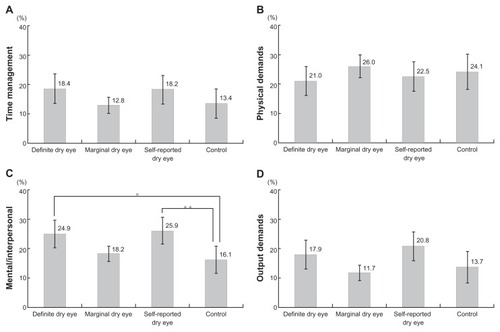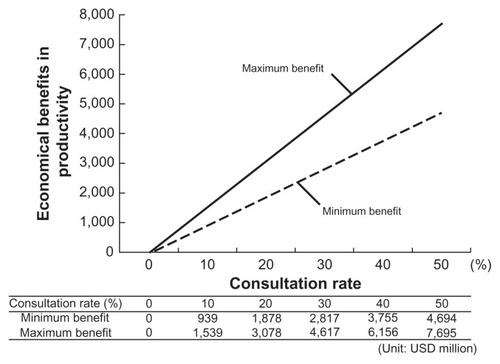Figures & data
Table 1 Background of participants (n = 355)
Figure 1 Work performance loss in each group.

Figure 2 Work productivity loss by subscale scores for four aspects of work limitations, ie, time management (A), physical demands (B), mental/interpersonal (C), and output demands (D).

